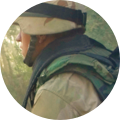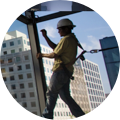Solution Finder
Not sure where to start? Try our Solution Finder. It can find any of our brands or products in an instant.
We're meeting the unique public sector requirements of federal, state, and local government agencies through our science driven innovation and collaboration.
As our country’s population grows, so do the challenges of national defense. DuPont knows that protecting our country and meeting the energy and food needs of its inhabitants are not the jobs of just one company. By working together with local, state, and national agencies, we’re able to offer a range of products that address these growing needs. After all, we’re dedicated to the same thing, making the world better for all of us.
Protecting people and the environment is a top priority for DuPont. DuPont collaborates with U.S. government agencies to help them develop materials, products and solutions that keep us safe.
We’re advancing tomorrow’s energy technologies, from energy storage to renewables to energy efficiency applications.
Our scientists and engineers work to not only help improve food safety, but to make sure there is enough healthy food for everyone.
From public parks to federal buildings, our materials are more likely to weather the elements, increase energy efficiency, or withstand security threats.
Whether transporting people or goods, we have a range of solutions available to help manage transportation challenges.
Not sure where to start? Try our Solution Finder.
Our Solution Finder can find DuPont brands and products to help your company solve its challenges.




